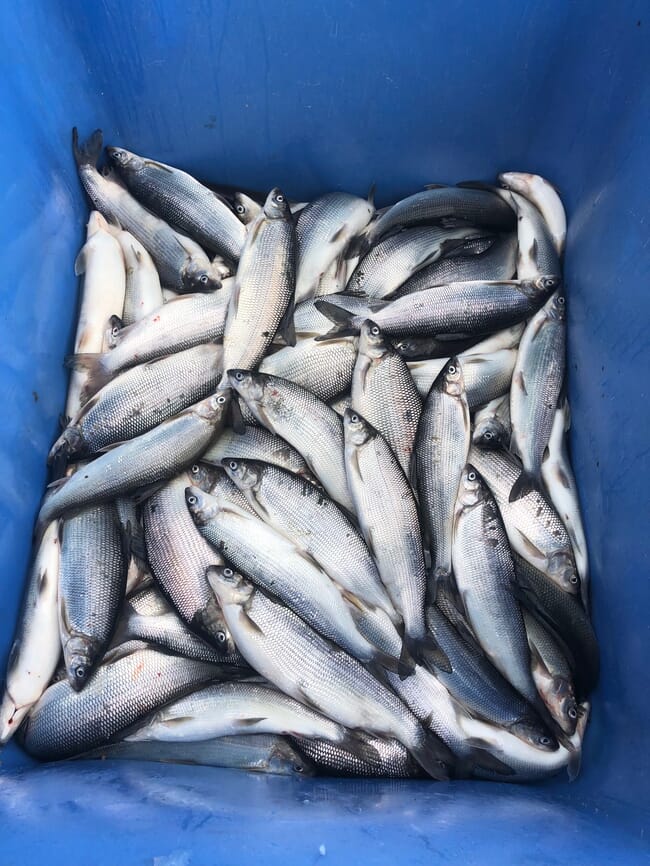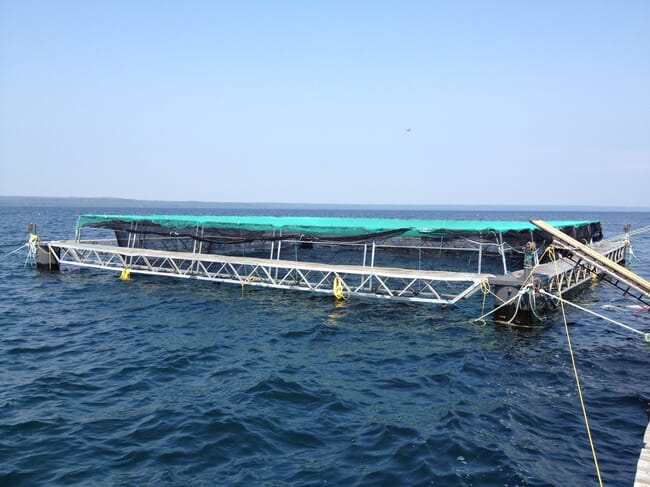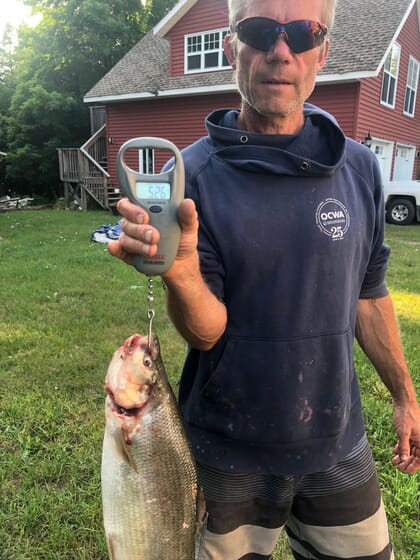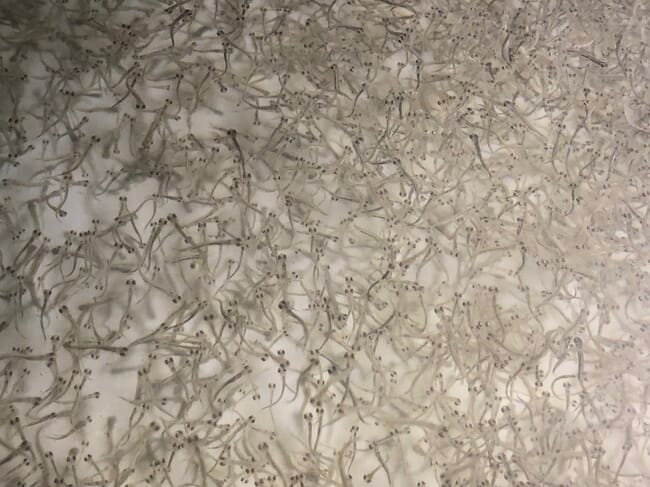
© New North Fisheries
Farming fish on Lake Huron isn’t for everyone. With windchill driving winter temperatures below minus 40°F on a regular basis and ice covering the lake for six months of the year it’s a tough environment – both for farmers and their fish.
After 10 years on a rainbow trout farm in Manitoulin Island, Ontario, Jeff Tuerk decided there must be a better way to farm than the standard net pens used in trout production and decided to design, and build, a submersible alternative.
“Why be at the surface with all this turmoil and these issues? The conditions are much more favourable in deeper water. When it’s at the surface the wave energy passes right through it with no issues. But it’s even more comforting when you sink it – you can go home at night and never have to worry. There’s nothing to see, so people don’t complain. There are no storms, no waves, no ice, no predatory birds and a better temperature regime,” reflects Tuerk.
He decided on building a four-spar steel submersible cage with a 2,600m3 capacity, which could be raised and lowered to the desired depth using nothing more sophisticated than a compressor.

© New North Fisheries
“The four spars are connected by a walkway making it similar to operate, when on the surface, to regular pens, but no net weights are needed which is nice, especially in areas with high currents, as the cage provides attachment points to pull the net down and across to keep it tight in heavy currents,” he says.By 2004, four years after coming up with the concept, the first of his cages was ready. Following a successful trial by a local trout farmer, Tuerk – who had moved to a career in water quality – was poised to roll out his novel design to farmers in the Great Lakes and beyond.
A species new to aquaculture
The idea failed to catch on among the trout farming sector. This was partially because the farmers were used to using walkways from shore to service their cages and partially because rainbow trout needs fairly frequent access to the surface to fill their swim bladders, Tuerk explains. However, he was determined to do something with the cage and – a decade later – came up with a new idea. He decided to use it to produce a popular native species, lake whitefish (Coregonus clupeaformis), which was experiencing a sharp decline in the wild.
“There’s a strong demand, and an established fishery, for the species, but there has been a major decline in numbers over the last 15 years, as non-native invasive zebra mussels have been outcompeting the whitefish larvae for food,” Tuerk explains.
He ran his idea past local First Nation fisherman Ross Herbert and they decided to form a company – New North Fisheries. In November 2016 they obtained their first batch of eggs from whitefish that had been harvested by a commercial fishing vessel. The fertilised eggs were delivered to College Boreal in Sudbury Ontario, then the fry were transferred to the Alma Aquaculture Research Station, part of the University of Guelph.

© New North Fisheries
By June 2017 the “mosquito larvae-sized” whitefish had grown to become 5 g fingerlings and were transferred to a small portable cage for a few weeks of acclimation to life in the lake, before moving on to Tuerk’s submersible grow-out pen the following month.
Given that the species had never, to the best of Tuerk’s knowledge, been cultured, he was braced for a steep learning curve.
“I’m learning a lot, but so far there have been no major biological issues, which is unusual. We did have some issues with thermal stress in the summer, but this stopped when we moved the cage out to deeper water, they really prefer cold water,” he reflects.
One discovery Tuerk did make was hugely positive in terms of growing the fish in a location that’s ice-bound for half the year.
“We discovered over the first winter that lake whitefish have a unique ability to regulate their air bladders by stripping gases from the water without the need for surface access – they were submerged under the ice for six months. Rainbow trout, the only commercial species raised in open pens in this area, must have access to the surface every two weeks or suffer from negative buoyancy, and eventual death,” Tuerk explains.
The bottom of the pen currently rests on the floor of the lake, 80 feet down, while its top is 40 feet below the surface. Despite this making it hard to access the cage, most of the day-to-day operations can be safely undertaken from the shore.
“We feed the fish from the shore using a water-based delivery system, and we’ve never missed a day’s feeding because of weather. And we have a camera 20-25 feet below the end of the feed pipe so we can monitor the fish too. We can even raise the cage to the surface from the shore, using a simple compressor,” Tuerk explains.

© New North Fisheries
In demand
Tuerk’s first cohort of fish were ready for harvest – at between 2lb and 5lb – roughly two years after first being stocked into his novel system. However, a series of setbacks delayed this by over six months.
“My business partner suffered a heart attack at the end of last year and then Covid-19 came along by the time he’d recovered. We’d been able to sell some fish locally but around midsummer we got a call from a major retailer in Chicago and they were so impressed with the quality of the fish – ours reach market within 30 hours while the wild-caught fish typically take 4-5 days – that they cleaned us right out,” he explains.
With the cage now restocked Tuerk is looking to extend the harvest season beyond the late April – early November window, when the wild-caught whitefish are available. This means he’ll need to bring the cage up through the ice on a regular basis, but believes this will be possible.
“We’d just need to install ice eaters on top of the cage railings and energise them after the ice-in, which would allow us to raise the cage without any issues,” he says.
Looking ahead
And he sees the long-term prospects for farming lake whitefish as being promising, after the enthusiastic response to the first 27-tonne harvest, and thinks that the fish should be able to command roughly an additional dollar per pound compared to farmed rainbow trout.
“We’ve had some government assistance so far, but we’ve mainly funded the project from our own pockets. We now have the proceeds from our first harvest but are looking to raise additional funds to build and stock another, bigger submersible pen for the final stages of grow-out,” Tuerk concludes.




